“Our greatest weakness lies in giving up. The most certain way to succeed
is always to try just one more time.” Thomas A. Edison
When I first set out to design and build a much better hand pump than any currently known, I had no idea what the outcome would be. I just hoped for a better hand pump.
I could have purchased a fancy, high-tech deep-well pump with traditional mechanics, but it takes a strong, fit man to operate one of those. Or I could have bought one of the other high-tech pumps that are easier to use. It’s easier because you’re lifting much less water per stroke through a smaller cylinder. But, in reality, I would have ended up with an expensive deep-well squirt gun that would only be good for short-term use. I needed something for the long term, a good ol’ human-powered water-pumping machine to supply the demand without great effort.
My first thoughts were that if man could design and build water-pumping windmills – a machine capable of pumping high volumes of water from shallow wells and practical amounts from deeper wells with wind power – surely we can make a machine that could do the same under human power.
I first looked at the basic mechanics of common hand pumps ― a lever and fulcrum. The design limits the stroke length and the leverage that can be practically created, limiting the cylinder size that can be operated. There is no potential advancement here, I thought, so I needed to think outside the box and much bigger to achieve a greater goal.
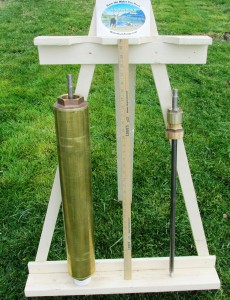 Instead, I installed a common 4” windmill pump cylinder with a longer stroke in my well. I began to perceive from that point how to make a device that could operate that reciprocating pump cylinder efficiently and with greater volume. I asked a windmill professional for advice and told him what I was trying to do with this larger cylinder with an 80’ head pressure. He said I would never be able to pull up on the rod, that the force is too great under human power. His words were discouraging, but it was too late. I already had the cylinder in my well. I had no choice but to try.
Instead, I installed a common 4” windmill pump cylinder with a longer stroke in my well. I began to perceive from that point how to make a device that could operate that reciprocating pump cylinder efficiently and with greater volume. I asked a windmill professional for advice and told him what I was trying to do with this larger cylinder with an 80’ head pressure. He said I would never be able to pull up on the rod, that the force is too great under human power. His words were discouraging, but it was too late. I already had the cylinder in my well. I had no choice but to try.
When I first began operating the sucker rod up and down, I thought that old windmill man did not know what he was talking about. I felt relieved until the 2-inch drop pipe started filling with water. Each stroke became harder and harder until I couldn’t pull up any more. Yet no water had reached the surface. (This prototype was embarrassing – a device that moves up and down with counterweights.)
I thought I would just add more weights. After adding a few hundred pounds, I achieved reciprocation. But after looking closely, I realized the drop pipe and well seal were moving together up and down. The pump rod didn’t budge. (The tightened well sell and drop pipe came right up with the sucker rod.) I bolted down and re tightened the well seal and tried again. The well seal stayed in place, but the drop pipe slowly slipped up through the well seal. The pump rod still didn’t budge. It wasn’t practically anyway, so I went back to the drawing board with the words of the windmill professional haunting me for the next few months of trial and error.
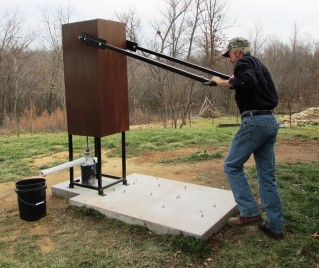 After learning more about the intense load that rested within the large pump cylinder (at the current application), I realized I not only needed a water pump, but I also needed a jack to lift the load. So, I set out to design and build a water well pump jack. The first important step was to secure the well seal and drop pipe to the well head.
After learning more about the intense load that rested within the large pump cylinder (at the current application), I realized I not only needed a water pump, but I also needed a jack to lift the load. So, I set out to design and build a water well pump jack. The first important step was to secure the well seal and drop pipe to the well head.
I also remembered what a professional well driller wrote to me: “My thoughts are you may be trying to reinvent the wheel. I would have thought in 150 years of building hand pumps and windmills, the best possible combinations would have already been thought of, but I certainly appreciate the fact that you’re looking to improve on this. Who knows, you may just come up with something, or you will come to the same conclusions that the rest of the industry has in 150 years of building them.”
I chose to focus on the positive.
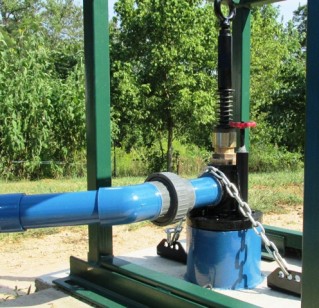 When I reached 6 GPM with 18 strokes (at the same application) with the third prototype, I knew then that I had definitely come up with something. I didn’t stop there, but improved the capacity to 17.5 GPM with about 20 strokes. We will continue to testing the peak performance of the WaterBuck Pump (patent pending) – a manually operated pump jack.
When I reached 6 GPM with 18 strokes (at the same application) with the third prototype, I knew then that I had definitely come up with something. I didn’t stop there, but improved the capacity to 17.5 GPM with about 20 strokes. We will continue to testing the peak performance of the WaterBuck Pump (patent pending) – a manually operated pump jack.
Current pump cylinder specifications— 4”, 16” stroke, 0.87 gallons per stroke. More than 5 gallons of water is delivered with just 6 strokes.
Video: Performance with 80′ head: With the enhanced mechanics, a 1 minute sprint by a man in his 50s yielded 17.5 gallons and 9.5 gal in 30 seconds. With the previous mechanics, the yield was 13.5 gallons in 1 minute and 7 gal in 30 seconds. Same operator filled a 55-gallon barrel non-stop in 6 minutes, 45 seconds. Please see “WaterBuck Performance”
New Record For The WaterBuck Pump: 07/21/14, 22 gallons in one minute
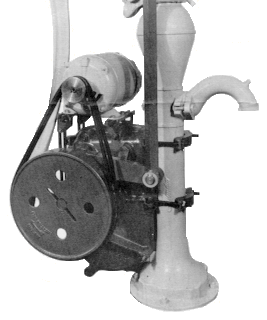 The water well industry designed a pump jack to operate hand pumps and windmill pump systems when needed. Cost $3000.00
The water well industry designed a pump jack to operate hand pumps and windmill pump systems when needed. Cost $3000.00
However, it is motorized. What is unique about our manually operated pump jack compared to the most commonly used motorized version is it not only exceeds the lift and peak performance of a 12’ water pumping windmill in GPM, it easily exceeds the performance of the motorized version. They are not designed to operate a 4” reciprocating pump cylinder.
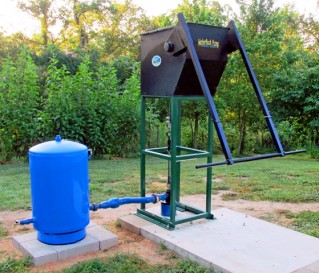 After two years, the outcome of our efforts greatly exceeded anyone’s expectations, setting a new standard for high-torque, high-volume and high-lift manually operated mechanical lift well pumps.
After two years, the outcome of our efforts greatly exceeded anyone’s expectations, setting a new standard for high-torque, high-volume and high-lift manually operated mechanical lift well pumps.
WaterBuck Pump Pricing / Quote

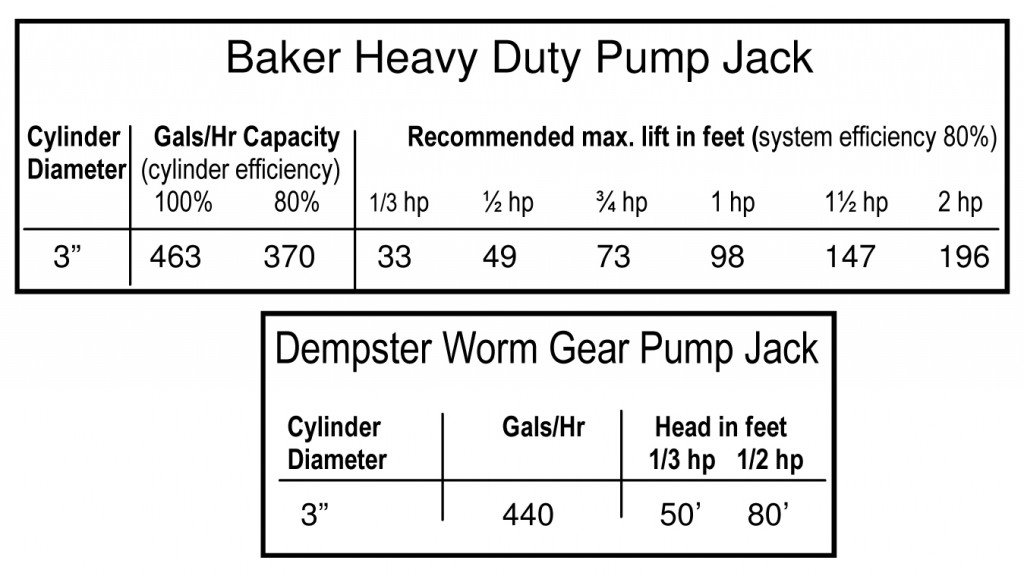

I have about a 220ft well (static level). Roughly, how much would if cost for one of these. I am in the market for a manual well pump, it is a necessity, but money is unfortunately limited. Thanks, Todd G
Hello Tod,
You can view a sample price of a WaterBuck at the following link. http://waterbuckpump.com/the-ultimate-hand-water-pump/waterbuck-pump-pricing-quote/ Thanks for viewing.